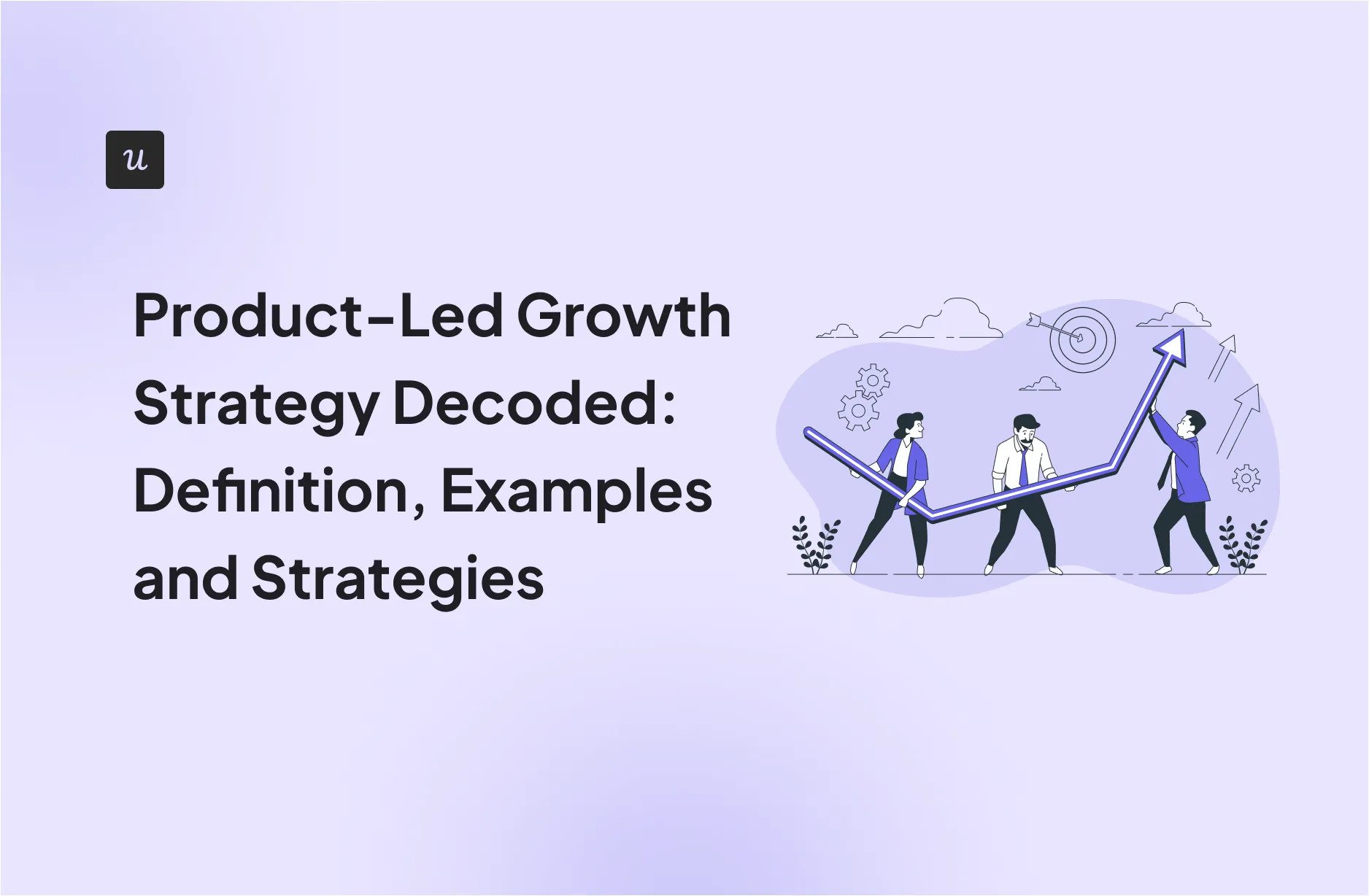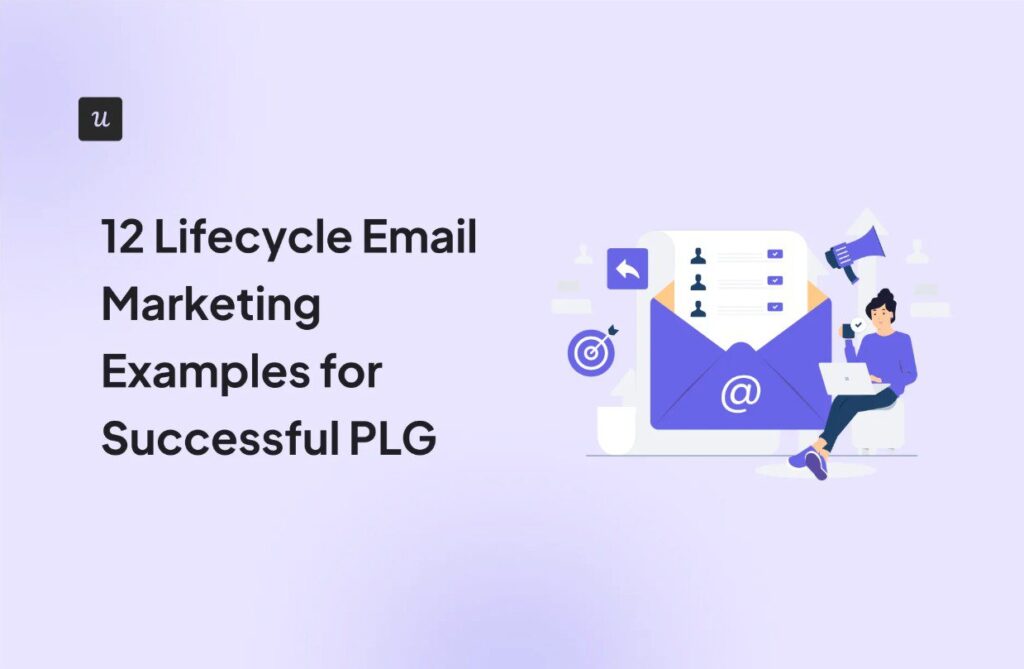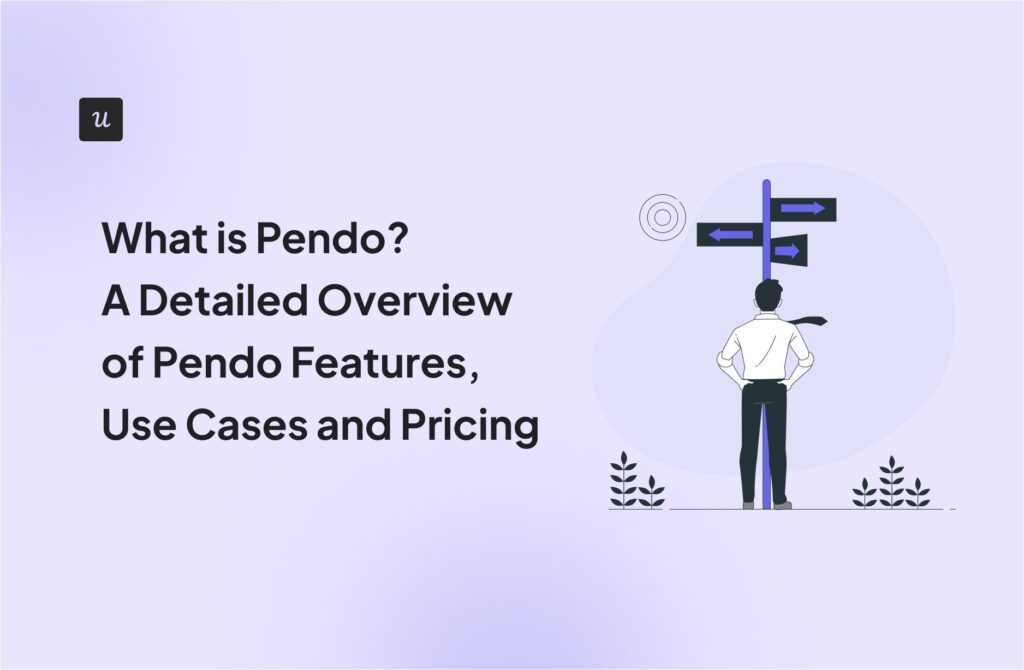
Product-Led Growth Strategy Decoded: Definition, Examples and Strategies
Get The Insights!
The fastest way to learn about Product Growth, Management & Trends.
What is a product-led growth strategy?
A product-led growth (PLG) strategy is a business approach where the product itself becomes the primary driver of customer acquisition, engagement, and retention.
The idea is simple: create a product that’s easy to use, solves real problems, and delivers value right away—no complicated hoops to jump through.
Benefits of the product-led growth strategy
Adopting the PLG model has several advantages, such as:
- Shorter sales cycles. PLG focuses on letting users see the product’s value for themselves, which speeds up the decision-making process. Prospective customers can try the product for free and experience whether or not it solves their problems firsthand. This makes them more likely to convert without going through extensive negotiations with sales teams.
- Lower customer acquisition costs (CAC). When users have a good experience with your product, they’re more likely to recommend it in forums, to colleagues, or through social media. Word-of-mouth marketing and organic traffic connect you to new customers and lower your acquisition costs.
- Rapid growth. According to Bain & Company, companies that are primarily product-led increase revenue faster than others. This is because PLG lets you scale and increase your user base without having to hire more sales or marketing people.
Is the product-led growth model right for you?
If you have a SaaS tool where users can experience value from the start and have a big budget, then yes, you may benefit from adopting a PLG model. If not, you may want to consider other alternatives or revisit the possibility once you have a more robust product and a bigger budget.
Here are factors that intervene in the decision to pursue this model:
- Product-market fit. Before embracing a PLG strategy, make sure that your target users either need or desire your product. Since PLG is all about showing your product’s value to users, you can’t possibly convince them of your greatness if you’re not solving a market need.
- Team and resources. You need the right mix of people, technology, and budget to take on this strategy. Before adopting a PLG model, determine if your team members are willing to adopt a new way of work where the product is the number one priority. Also, identify if you have the right tracking tools for product analytics and the budget to conduct ongoing user research.
- Performance. PLG only works if you have a great-performing product. Is yours competitive, fast-loading, and intuitive? This question gives you insights into the areas of your product that you need to improve before launching PLG as a full-on strategy.
- Type of product. Not all products will benefit from adopting a full PLG strategy because you need users to see value fast. For example, SaaS tools that need more than 14 days or a month for the user to experience the ‘aha moment’ are likely not the best candidates for PLG.
Examples of product-led companies
These companies are killing it at attracting customers through product-led growth strategies. Here’s what they’re doing right.
Slack
Slack, the communication and productivity tool, is a proven example of a successful PLG model. It has almost 40 million daily users and a ≥4.5/5 score on most customer review sites.
What makes it product-led?
- It offers a freemium version with core features.
- Every new user gets to complete an interactive onboarding with the help of Slackbot. The Slackbot accompanies the user after onboarding and guides them contextually whenever they discover a new feature.
- It launched Community Chapters for Slack advocates to meet up in different locations and networks.
- It uses product-qualified leads (PQLs) to drive upsells for free accounts that reach its 2,000 message limit. This way, the sales team only steps in when there’s a high chance of conversion.
Airtable
Airtable is a database tool that powers low-code applications. It has a big user base of 500,000 customers and a 2024 annual revenue of $204.7M to date.
What makes it product-led?
- Airtable offers a freemium model with access to predefined templates.
- It relies on a reverse trial as an acquisition method to show users all they could get if they were paying customers.
- It built the Airtable Universe, where users can share case studies and use cases to inspire others or allow them to borrow templates from the community.
Dropbox
Dropbox, the popular file storage and sharing tool, has over 700 million registered users and an annual revenue of $2.5 billion in 2023.
What makes it product-led?
- It comes with a freemium version.
- This tool allows users to gain incentives, like extra storage, from inviting friends. This has significantly contributed to Dropbox’s expansion.
- Dropbox hosts a community where users can ask each other questions and get help.
Calendly
Calendly was the first tool that allowed people to easily schedule meetings without being in the same organization. This paid off as it became profitable three years after launch and now has over 20M users.
What makes it product-led?
- Calendly got product virality as it solved the problem of an untapped market.
- It created growth loops where every new invitee got to experience the product even if they weren’t users, which led to an increase in users.
- This tool comes with a free plan with essential features.
Cyberbiz
Cyberbiz is an Asian-based e-commerce platform that supports multiple stores in Taiwan. This is an interesting example of PLG because Cyberbiz doesn’t offer a free trial or plan. However, PLG allowed it to increase the feature adoption rate and get fewer support tickets.
What makes it product-led?
- Cyberbiz is focused on collecting user feedback, beta testing new users, and refining the product experience.
- It adopted Userpilot to improve its in-app communication by adding tooltips and banners to announce new features.
- This company monitors all product analytics in a comprehensive dashboard to review the performance of its in-app interventions.
These solutions were possible due to its partnership with Userpilot. Read the full Cyberbiz case study.
7 PLG strategies for driving customer success
If you want to start applying PLG in your business, here are seven strategies to consider:
1. Design a frictionless sign-up flow to reduce entry barriers
Your sign-up flow is the first real contact that your users have with your product, keep it short and simple. You can do this by removing the slots in the sign-up form that aren’t strictly necessary. All you need is an email, gather the rest later via a welcome survey.
Another idea is to show error messages to direct users to the area they need to fix. Also, adding loading screens can help users know that their action was processed and reduce frustration.
You can also simplify the sign-up flow by allowing single sign-on (SSO). This way users can share their information and create an account with a single click, like Loom does.

2. Offer reverse trials to hook users
Reverse trials combine the freemium and free trial models so users can test your paid features for a short period.
Think of Toggl Track, this time tracking solution offers users a 30-day free trial and a freemium membership.
The trial includes access to Toggl Track Premium features at no extra cost. By the end of the trial, users can choose to downgrade to the free version or pay for the plan they’ve been using.

This model is powerful because it leverages FOMO (fear of missing out). It drives the question: Now that I know how good this premium feature is, how can I live without it?
3. Shorten time to value through a personalized onboarding process
Remember the Bowling Alley Theory, design a straight-line onboarding for users to experience your product’s value. This flow should also come with bumpers to protect users from distractions and allow them to get to value much faster.
To design a straightforward and personalized onboarding process, you need to measure product usage data—and consult it to make decisions.
For example, imagine you have a time-tracking tool that turns worked hours into invoices. It comes with features for accountants, HR managers, and freelancers. The ‘aha moment’ for each of these personas is different.
So, you’ll need to add a welcome survey to your product, gather jobs-to-be-done data, and use it to personalize the onboarding flow.

Refining and personalizing the onboarding helps you shorten time-to-value as you’re never telling a user how to use a feature they won’t ever need.
4. Use checklists to drive users toward the activation point
If someone asks what you had for breakfast yesterday, you may not remember. However, you can probably list three things that you need to finish today without a doubt. This happens due to the Zeigarnik effect. It explains that, as humans, we tend to remember pending or unfinished responsibilities better than the ones we already completed.
You can leverage this effect by adding in-app onboarding checklists. By including all the actions a user needs to take to be fully set up, it’s more likely that they remember to complete the onboarding.
As an additional tip, we recommend adding a progress bar to your checklist to boost completion rates and improve user activation.

5. Create a feedback loop with users to build trust
Since PLG ensures products are valuable to users, make sure to gather feedback continuously to understand what they find valuable. Also, collecting and acting upon user feedback lets you enhance the tool based on their comments.
To do so, you need to create a customer feedback loop where you:
- Find opportunities to collect customer feedback.
- Analyze the survey responses.
- Let the user know that you’re working on it through automated messages.
- Act upon feedback and ideate solutions.
- Follow up with customers to communicate changes and close the feedback loop.

Establishing this process helps PLG companies lower customer churn by fixing bad experiences and communicating to users that their opinions matter. This helps to build closer relationships with customers and enables loyalty and trust.
6. Analyze product usage to identify improvement opportunities
Track in-app user behavior to analyze where users spend most of their time, how often they use it, and how long the usual session lasts. Build graphs out of this data to review user behavior trends and identify patterns.
Also, review your conversion funnel and identify friction points. And, track and monitor internal KPIs to easily spot potential changes in trends or patterns that may indicate product issues. For example, an increase in customer support tickets may be an indicator that there’s a bug affecting your tool.
7. Prompt upgrades at high-intent moments
In PLG companies, selling, cross-selling, and upselling tend to happen within the tool. Therefore, you need to trigger messages suggesting upgrades at the right times.
Think of Loom, this video recording tool offers a freemium version with a recording limit. Once the user reaches the 5-minute mark and still hasn’t finished the video, Loom prompts them with this message:

At this moment, the users understand what they’re missing and see the clear value behind a potential upgrade. This may lead to higher free-to-paid conversions.
Some companies may still rely on sales reps to close deals, but you don’t want to miss out on the opportunity to capture users at these high-intent moments.
Key metrics for measuring product-led growth success
Stay on top of these metrics to track the efficiency of your product-led growth strategy:
- Activation rate. A high activation rate hints that your onboarding flow is effective. This helps drive product-led growth as you’re quickly demonstrating value to new users and increasing the likelihood of long-term engagement.
- Time-to-value (TTV). This is a key PLG indicator, as a shorter TTV means users can quickly understand what your tool can do for them. During a free trial, a high TVV can increase conversions and advocacy.
- Free-to-paid conversion rates. When a high percentage of your free users become paying customers, it indicates that your users value your product and are willing to keep exploring it. This metric has a direct impact on revenue, so a high free-to-paid conversion rate means your PLG strategy is working.
- Monthly recurring revenue (MRR). Along with free-to-paid conversions, tracking MRR is crucial to understanding how much value your users see in your paid plans. If the MRR drops, it could indicate that the promised value isn’t realistic for pro plans and customers are churning.
- Retention rate. A steady and high retention means that users find ongoing value in your tool. This allows you to have predictable and sustainable growth rooted in user loyalty. If this starts trending down, it could indicate that your product is no longer living up to the promised value.
- Customer lifetime value (CLV). A high CLV indicates that users continue to perceive value from your product over time and keep choosing you over others. This is a key indicator of a successful product-led strategy, as well as high customer loyalty, satisfaction, and trust.
- Expansion revenue. Through expansion revenue, you can identify how much money your existing customers are willing to spend on your tool. This is a direct testament to your product’s perceived value, but also to an effective product-led model where upselling is built into the product experience.
Execute your product-led growth strategy with Userpilot
Userpilot is an all-in-one, no-code product-led growth tool. These are key things you can do with Userpilot to enable PLG:
- Deploy contextual in-app messages. Trigger messages after users take certain actions. Choose from different UI patterns such as tooltips, modals, banners, or slideouts, and customize them to match your brand. Edit the fonts, colors, and layout, and even add videos or photos for extra guidance. As you’ve seen, timely in-app guidance and communication can lead to higher onboarding completion rates and successful upselling.

- Collect and analyze user feedback. Launch surveys using predetermined templates to evaluate your users’ experience, gauge their satisfaction, and measure loyalty. See the results individually or on a simplified metrics dashboard. Use the results to improve the product’s experience.

- Conduct a funnel analysis to identify the bottlenecks in the user journey. Visualize all the different steps of your funnel and identify friction points based on where users drop off. Reduce friction by adding in-app guidance or redesigning your funnel to improve the users’ experience.

- Track key metrics at a glance in analytics dashboards. Build custom dashboards or use predefined templates to visualize your product usage metrics. This allows you to spot trends and patterns and predict future user behavior. Remember, having access to your data allows you to make better product decisions.

- Run product experiments to optimize the user experience. In PLG, the user is always at the center. So, increase activation rates and improve the onboarding experience by running A/B or multivariate tests to refine flows based on hard data.

- Offer self-serve help with a resource center. Build an in-app resource center for users to find answers to their daily questions without your intervention. Add guides on how to use your tool’s features and offer in-app support in case they need further help. Making it easy for your users to find answers and solve issues is a big part of a product-led growth strategy.

Conclusion
PLG is a powerful business strategy that SaaS companies can adopt to increase user acquisition, engagement, and retention.
But to implement a product-led growth strategy in your business, you need a tool like Userpilot that lets you:
- Conduct user surveys and gather feedback.
- Experiment with your onboarding flows.
- Segment users and design personalized experiences.
- Launch in-product messages.
- Offer in-app guidance.
- Track and analyze in-app user behavior.
This no-code PLG tool is the only one you need to implement and manage your product-led growth strategy. Want to experience Userpilot for yourself? Book a demo.
Product-led growth strategy FAQs
What does PLG mean?
PLG means product-led growth. It refers to a go-to-market strategy that focuses on offering a great product experience and shortening time-to-value to drive business growth.
What are the three pillars of product-led growth?
The three pillars of product-led growth are:
- Design for the end user. Build products for and with users. Conduct research, ask for feedback, and make continuous improvements.
- Deliver value before capturing value. Give users the chance to test your product for free.
- Invest in the product with go-to-market intent. Design features, make product improvements, or migrate technologies only if you’re certain that users will see the value and pay for it.
What is the difference between PLG and PLS?
The main difference between product-led growth (PLG) and product-led sales (PLS) is that PLG expects growth to happen within the product. PLS, on the other hand, uses the product’s experience and user satisfaction as a selling point during personalized product demos and sales calls.





